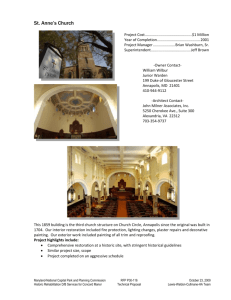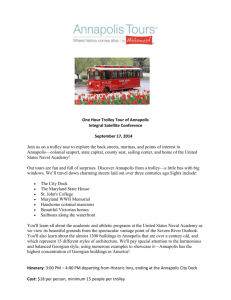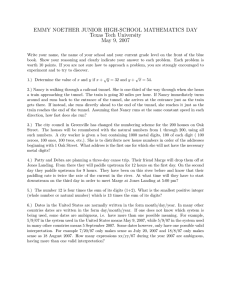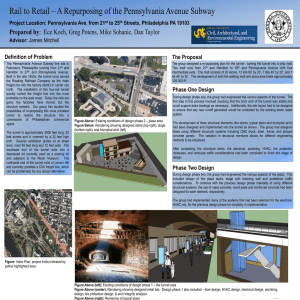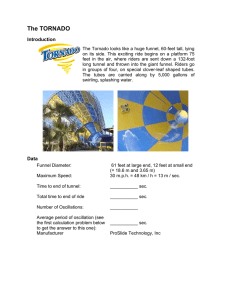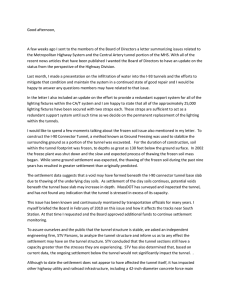Question 1: In order to speed global travel, a tunnel... from Annapolis to the opposite side of the globe (a...
advertisement
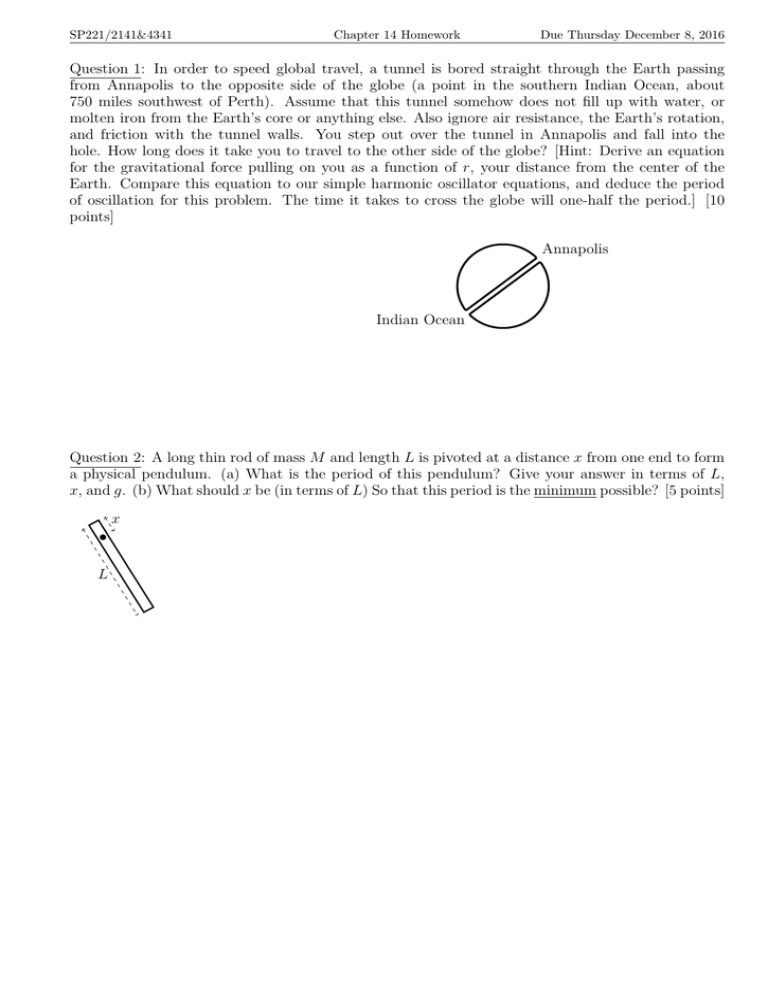
SP221/2141&4341 Chapter 14 Homework Due Thursday December 8, 2016 Question 1: In order to speed global travel, a tunnel is bored straight through the Earth passing from Annapolis to the opposite side of the globe (a point in the southern Indian Ocean, about 750 miles southwest of Perth). Assume that this tunnel somehow does not fill up with water, or molten iron from the Earth’s core or anything else. Also ignore air resistance, the Earth’s rotation, and friction with the tunnel walls. You step out over the tunnel in Annapolis and fall into the hole. How long does it take you to travel to the other side of the globe? [Hint: Derive an equation for the gravitational force pulling on you as a function of r, your distance from the center of the Earth. Compare this equation to our simple harmonic oscillator equations, and deduce the period of oscillation for this problem. The time it takes to cross the globe will one-half the period.] [10 points] Annapolis Indian Ocean Question 2: A long thin rod of mass M and length L is pivoted at a distance x from one end to form a physical pendulum. (a) What is the period of this pendulum? Give your answer in terms of L, x, and g. (b) What should x be (in terms of L) So that this period is the minimum possible? [5 points] x L SP221/2141&4341 Chapter 14 Homework Due Thursday December 8, 2016 PROGRAMMING PROBLEM Question 3: Two masses, m1 and m2 , are connected by an ideal spring of spring constant k. They sit on a frictionless floor. The two springs are pulled apart, then released and allowed to oscillate. The period of oscillation is the amount of time it takes for the springs to return to their initial (maximum) separation. Write a computer program that will allow you to calculate this period for any values of m1 , m2 , and k. Complete the table below, giving your calculated period for each set of values listed. We know that the period p of a single mass on a spring (where the other end of the spring is held fixed) is given by T = 2π m . I suspect that the period of the two-mass system k q ∗ m2 will be given by T = 2π mk , where the reduced mass of the system is defined as m∗ = mm11+m . 2 Complete the table, with the reduced mass and the predicted period using this formula to see if I am correct. I have given four sets of variables; complete these, and then add two more rows with variables of your choosing. [20 points] m1 m1 4.0 4.0 4.0 4.0 kg kg kg kg m2 4.0 4.0 2.0 2.0 kg kg kg kg k 25 50 25 50 N/m N/m N/m N/m k m2 Calculated period m∗ = m1 m2 m1 +m2 2π q m∗ k



